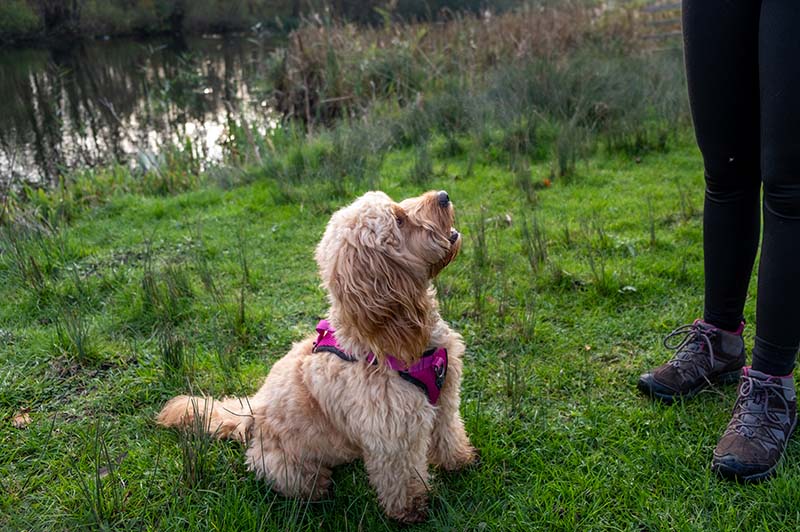Cane Corso St. Bernard Mix: Info, Pictures, Traits & Facts
Updated on

Click to Skip Ahead
Big dogs have always been kept for a variety of purposes, from companionship to protection. People are becoming more acquainted with large dog breeds these days, like the Cane Corso, increasing their popularity. St. Bernards are a well-known dog breed, but not a particularly common dog breed, so you may have never encountered one of these slobbery, loving giants. With the rise in popularity of both breeds, Cane Corso St. Bernard mixes have started popping up.
| Height: | 23–30 inches |
| Weight: | 85–120+ pounds |
| Lifespan: | 8–12 years |
| Colors: | Black, white, brown, gray, fawn, red, brindle, bicolor, tricolor |
| Suitable for: | Experienced dog owners, homes with large, fenced-in yards |
| Temperament: | Protective, loyal, curious |
The Cane Corso St. Bernard mix isn’t a clearly established breed or breed hybrid at this point, so it may be difficult to find. This is an interesting mix of breeds, which results in a very large dog that requires an experienced dog owner to handle, so this mix isn’t for just anyone looking for a giant dog.
You can expect to find strong loyalty in these dogs, though. Both breeds are committed to their people, often providing protection to people and other animals alike. They can be strong-willed, but they are curious and likely to be trainable.
Cane Corso St. Bernard Mix Breed Characteristics
Cane Corso St. Bernard Mix Breed Puppies
Since this is an unusual mix of two uncommon breeds, you may have trouble finding one. If you do, it’s important to ensure they are not a backyard breeder. Ensure the parent dogs have had all recommended health testing for both breeds. Also, never take one of these pups home before at least 8 weeks of age. Staying with their mother and littermates is essential to proper socialization in dogs, and taking one of these pups too early can lead to you ending up with a poorly socialized dog that weighs as much as a grown woman.
You are most likely to find this mix in a shelter or with a giant breed rescue, in which case you can expect to spend anywhere from $50 to $250 for a pup. If you purchase your pup from someone who is breeding the mix, you may spend significantly more. Never purchase from a breeder without ensuring you are not unintentionally supporting a puppy mill first.

Temperament & Intelligence of the Cane Corso St. Bernard Mix 🧠
While the St. Bernard is considered to have average intelligence, the Cane Corso is considered to be a highly intelligent breed. Their loyalty to their people combined with their intelligence can make this mix highly trainable, although the parent breeds are prone to stubbornness, so training will take commitment.
Are These Dogs Good for Families? 👪
St. Bernards are considered to be a great breed with children, while Cane Corsi tends to be less tolerant of children’s shenanigans. The loyalty of these breeds will likely result in a protective pet for families, but it’s important to consider how protective this dog may be. If your home has frequent visitors and other children over, then this breed mix may not be suitable due to its risk for aloofness and a low tolerance for children.
Does This Breed Get Along With Other Pets?
Typically, you can expect the Cane Corso St. Bernard mix to get along with other dogs. Both parent breeds tend to do well with other dogs, although Cane Corsi are less outgoing and overtly friendly than the St. Bernard. They may do well around cats and other small animals, but proper introductions and supervision are necessary.
Early and proper socialization is essential to ending up with a dog that is safe to have around other animals. Simply due to their size, a poorly socialized Cane Corso St. Bernard or one that has not been exposed to other animals may be a very serious risk to other animals.
Things to Know When Owning a Cane Corso St. Bernard Mix:
Food & Diet Requirements 🦴
These dogs eat a lot! They are big dogs, with some St. Bernards reaching 200 pounds, so be prepared to invest in high-quality dog food very regularly. For a dog this size, you can expect a big bag of dog food to only last you a few weeks, at the most. Invest in food that contains excellent nutrition and is from a WSAVA-compliant brand, like Purina, Eukanuba, and Hills.
If you decide to raw feed or cook their food at home, then it’s absolutely necessary to consult a board-certified veterinary nutritionist to help guide you in balancing the diet properly. A poorly balanced diet can lead to nutritional deficiencies that can increase the risk of health and development problems in your dog.
Exercise 🐕
St. Bernards tend to be laid-back dogs that have low to moderate exercise needs, while the Cane Corso tends to be a high-energy dog. Combining the two breeds means you can end up with a wide range of energy levels. Regardless of your dog’s energy level, it’s extremely important for your dog to maintain a healthy body weight to reduce the risk of joint problems, as well as other issues.
This means providing your dog with daily exercise, whether it’s in the form of long walks, hiking, swimming, or plenty of active playtime. It’s not unheard of for a St. Bernard to plop down and refuse to go any further when they get tired of an activity, so make sure you choose activities that interest you and your dog in order to keep them up and active.
Training 🎾
While the Cane Corso St. Bernard mix is likely to be trainable, both of the parent breeds have a stubborn streak. This can create training challenges, so be prepared to get creative and be consistent with training. Stick to positive training methods with this mix. Harsh punishments and negative reinforcement may lead to anxiety and stress in your dog, increasing the risk of bites and decreasing the likelihood of a social, well-balanced adult dog.
Ensure the entire household is on board with the training regimen. If only one person is working to train the dog and everyone else is letting the dog do whatever it wants, then you’re going to struggle with developing a well-behaved dog. Keep in mind that the sheer size of this breed makes it essential that you help your dog learn proper obedience skills. The last thing you need is a 150-pound dog pulling you down the street.
Grooming ✂️
The Cane Corso is a short-haired dog that has relatively low grooming needs, but the St. Bernard has a long coat with a tendency to shed. Combining these two breeds means you can end up with a dog that has a coat somewhere between both parent breeds, so the grooming needs are likely to vary between individual dogs.
At a minimum, you need to be prepared to have a dog that will require brushing at least once or twice weekly to prevent tangles and mats. Nails should be kept short, and it’s important that you get your dog used to nail trims and having their feet handled when they’re still young and small. It can be very difficult to deal with a full-grown Cane Corso St. Bernard mix that fights nail trims. When needed, consult a professional groomer to help maintain your dog’s coat and nail health.
- See Also: 11 Best Dry Dog Shampoos
Health and Conditions ❤️
- Arthritis
- Skin allergies
- Cherry eye
- Ear infections
- Bloat
- Elbow dysplasia
- Hip dysplasia
- Cataracts
- Dilated cardiomyopathy
- Ectropion
- Entropion
- Epilepsy
 Male vs Female
Male vs Female
You can expect a female Cane Corso St. Bernard mix to be significantly smaller than a male of the same mix. In both breeds, females can come in at least 20 pounds smaller than their male counterparts, with female St. Bernards often coming in dozens of pounds smaller than males.
The biggest benefit of a female dog is that they tend to reach maturity faster than males, which means that training is often easier in the beginning. However, they are also likely to be more independent than males, and females are more likely to be aloof. Males may be challenging to train when they are young, but once they reach maturity, they make formidable, loyal dogs that will likely want to spend lots of time with you.
3 Little-Known Facts About the Cane Corso St. Bernard Mix
1. Both Parent Breeds Are Very Old
Both of these dog breeds have been around for a very long time. The St. Bernard is the younger of the two, having originated in Switzerland around 1695. The Cane Corso, on the other hand, originated in Italy around 1137. That means the Cane Corso has been around for almost 1,000 years!
2. The Cane Corso Is a Protector
This breed was developed with protection and guardianship in mind, but they have also been used for hunting large, dangerous game. Of course, they’ve also been kept simply for companionship. The Cane Corso was a very popular breed early on, but it has decreased in popularity with the decrease in farming in the last few hundred years. They are still kept on farms, though, serving as protectors of the land, home, people, and livestock.
3. The St. Bernard Has Many Skills
If you’re looking for a jack-of-all-trades kind of dog, the St. Bernard might fit the bill for you. These dogs were bred for a variety of jobs, including livestock guarding, draft work, and hunting. They’ve also been bred for herding, search and rescue, and being watchdogs. Their impressive size and deep bark make them effective at scaring away intruders, whether they’re human or animal. Their loyalty and gentle nature make them excellent dogs for search and rescue.
Final Thoughts
The Cane Corso St. Bernard mix can be a wonderful dog, but it isn’t a good combination for the average dog owner. Cane Corsi can be challenging dogs, and both breeds can be jumpy if not socialized properly. The large size of this mix means that bad behavior that a small dog might get away with can’t be tolerated, so consistent training and proper socialization aren’t optional. However, this mix does lead to dogs that are loyal and protective of their people and their homes.
Read Also:
- St. Bernard Dachshund: Pictures, Care, Temperament & Traits
- St. Bernard Australian Shepherd Mix: Pictures, Care, Temperament & Traits
Featured Photo Credit: Left – Didkovska Ilona, Shutterstock | Right – Aneta Jungerova, Shutterstock












